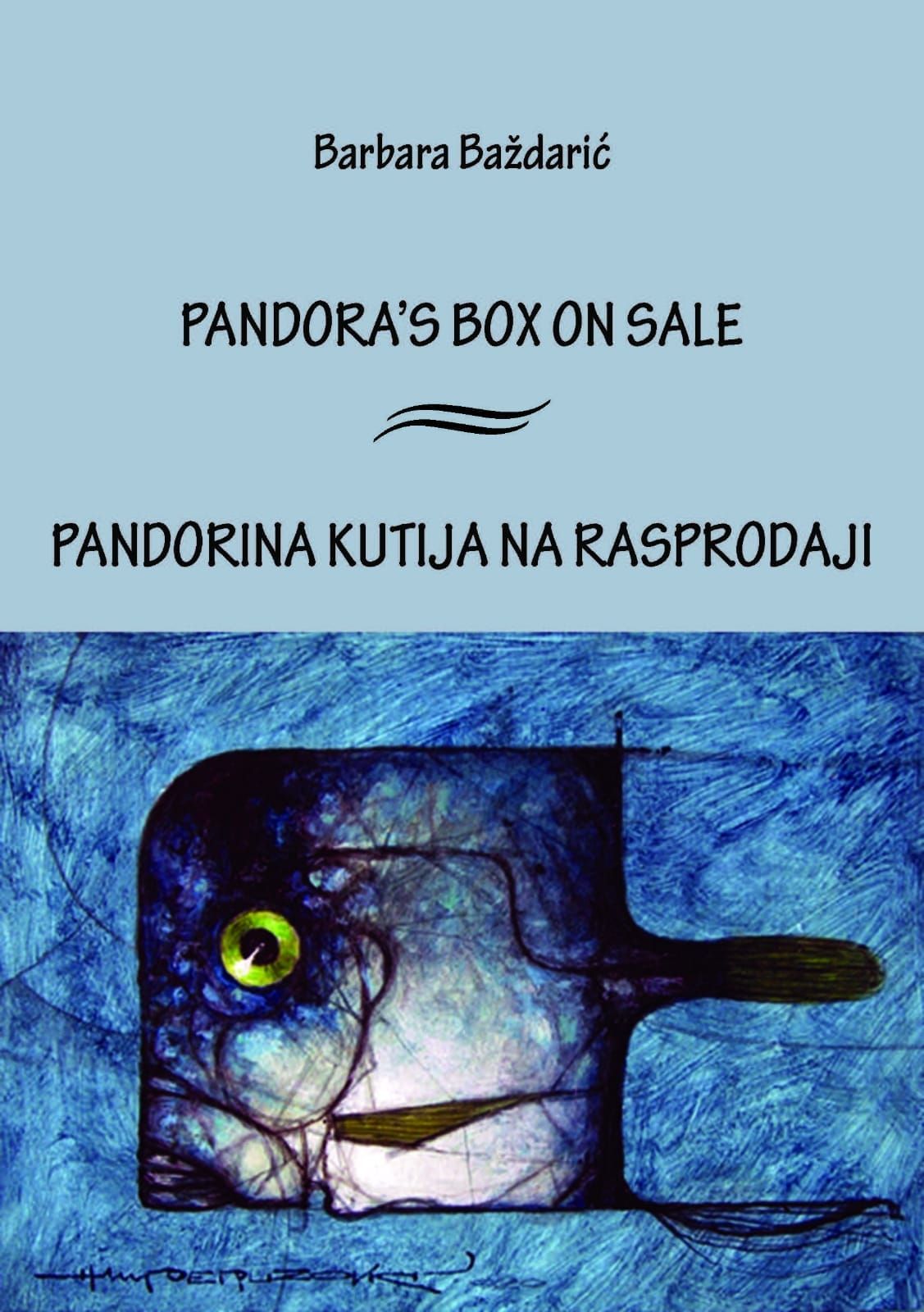
Pandora's Box on Sale/
Pandorina kutija na rasprodaji
bilingual poetry collection
English/Croatian
Over the bound edition with one hundred and twenty something pages, over this washed, dried, ironed, sprinkled poetic laundry, there floats the consciousness of a new self-assured poet. What do I mean? I mean I have been following Barbara since her beginnings, or rather since her collection I Bite. Then came I Think I Saw an Alien, her first attempt to orient her lyrical heroine towards the world and hit it with a volley of searing balls of fire; in that collection, world reflection and self-reflection rose to the level where the heroine placed herself in a self-referencing space and bit a large chunk of her own poetic cake. The third collection has not just outgrown the first two, but made a semantic quantum leap. Summed up in two words: enriched present.
I slowly cross critical roads to the busiest artery, where I draw isohypses of Barbara's text. The title reads Pandora's Box on Sale. The image of Pandora’s box can be understood as an element of the Greek mythological system of world creation and the archetypal struggle between good and evil. The myth of hope, which is metonymically associated with good, is one of the leitmotifs of this collection; placing it into humorous and ironic relations makes the collection even more complex. Hidden behind the superficial humor, there is deep wistfulness and melancholy felt by the lyrical heroine on her way.
From the Preface by Tim Lemac
The book’s title Pandora's Box on Sale points to the myth of Pandora. The story is grim: Pandora – the „all gifted“ – is a beautiful and foolish woman who brings all the evils of earthly life, sent by gods in a box, to the miserable human race. This announces some kind of pessimism. Like Alien and I Bite, it is mostly about the collision of the I and the world, about the agony of being and the nightmares of various distortions of human and social relations. However, that is only the surface: at the bottom of Pandora's box there is hope; besides, the box is on sale, which means that all the painful nightmares can be redeemed. The project of redemption is the very source of the book. Just like the first two books, Box is structured into three parts. The first part, Copyright to the Dream, is the counterpart of the first part of Alien, titled I am neither God nor Darwin. In the first part the author’s lyrical I speaks of deep topics of search, existence, Being, and identity; however, Box is more about writing as the creation of the world and relations. The second part – Does Hitchcock have Nightmares – corresponds with the second part of Alien – At the Construction Site – which displays the complexity of world perversions. The third part of Box – Icarus’ Flying Course – is the counterpart of The Minute of Silence, the third part of Alien, presenting the lyrical subject's showdown with a distorted self and a distorted world, the attempt to fly, and the eventual fall. Again there is hope, however. After all, arts and literature and just about any creation are a form of cheating death (Falling).
From the Afterword by Marina Katinić Pleić
Contact Us
We will get back to you as soon as possible.
Please try again later.
Contact
Newsletter
We will get back to you as soon as possible.
Please try again later.
